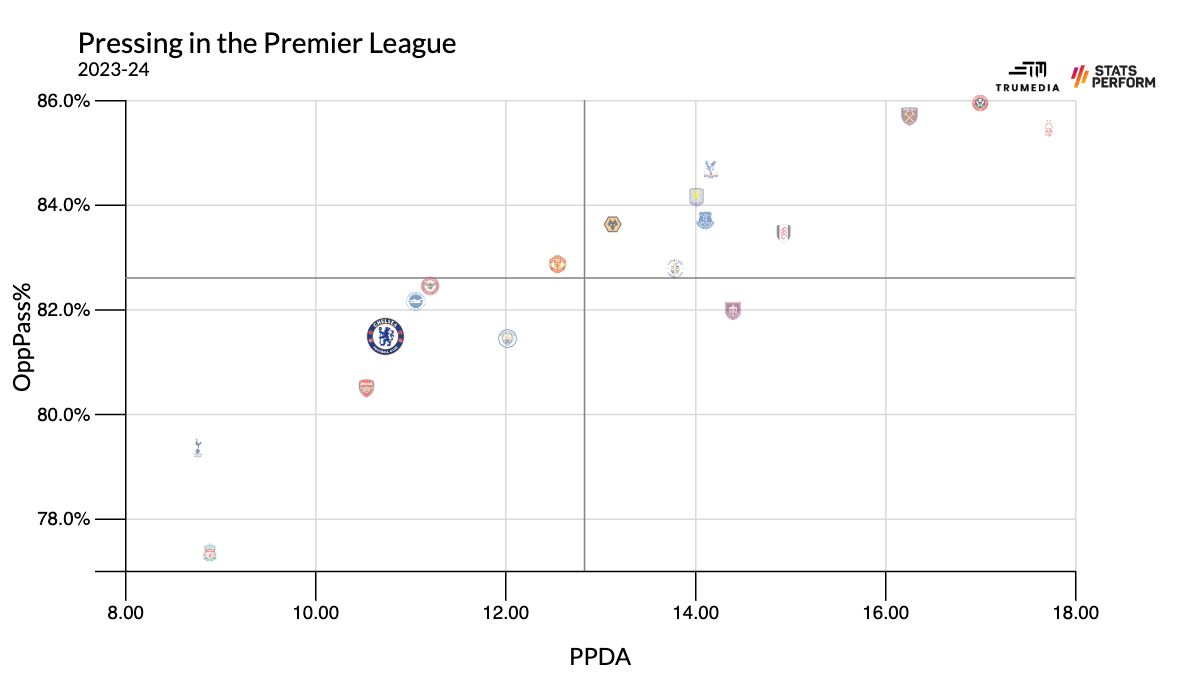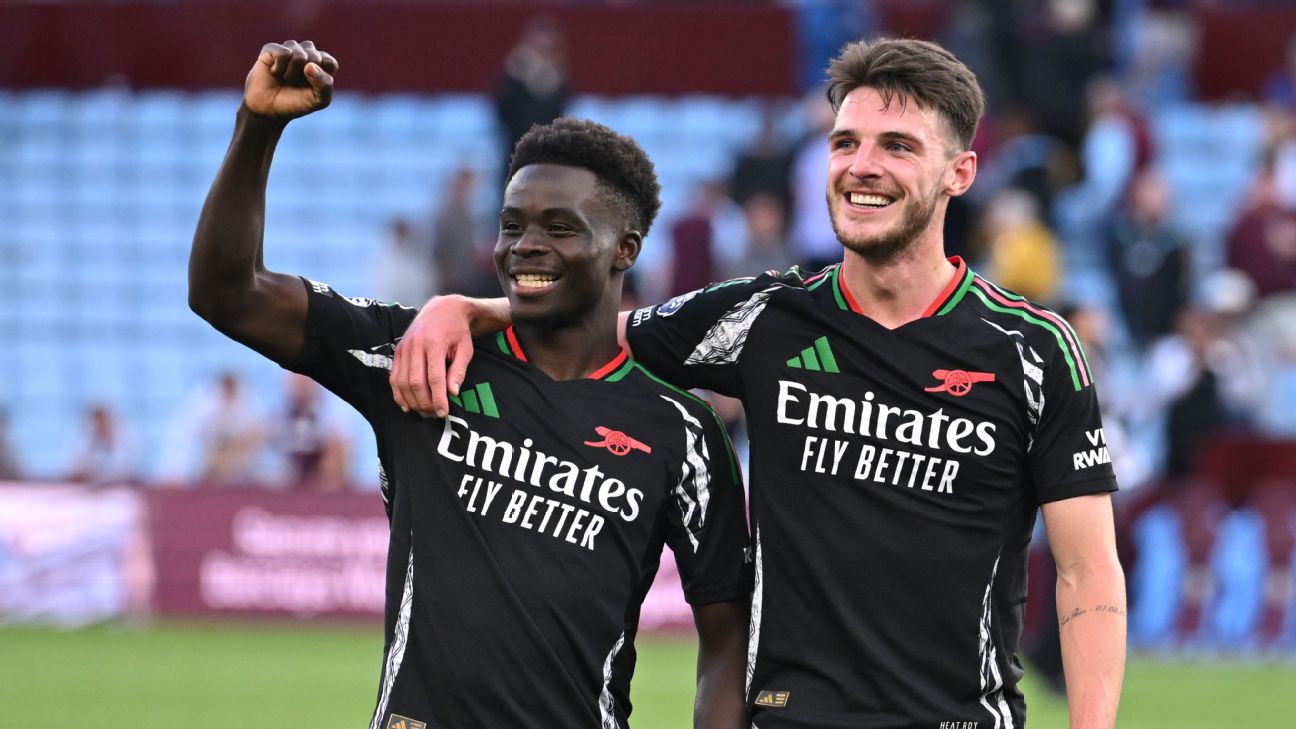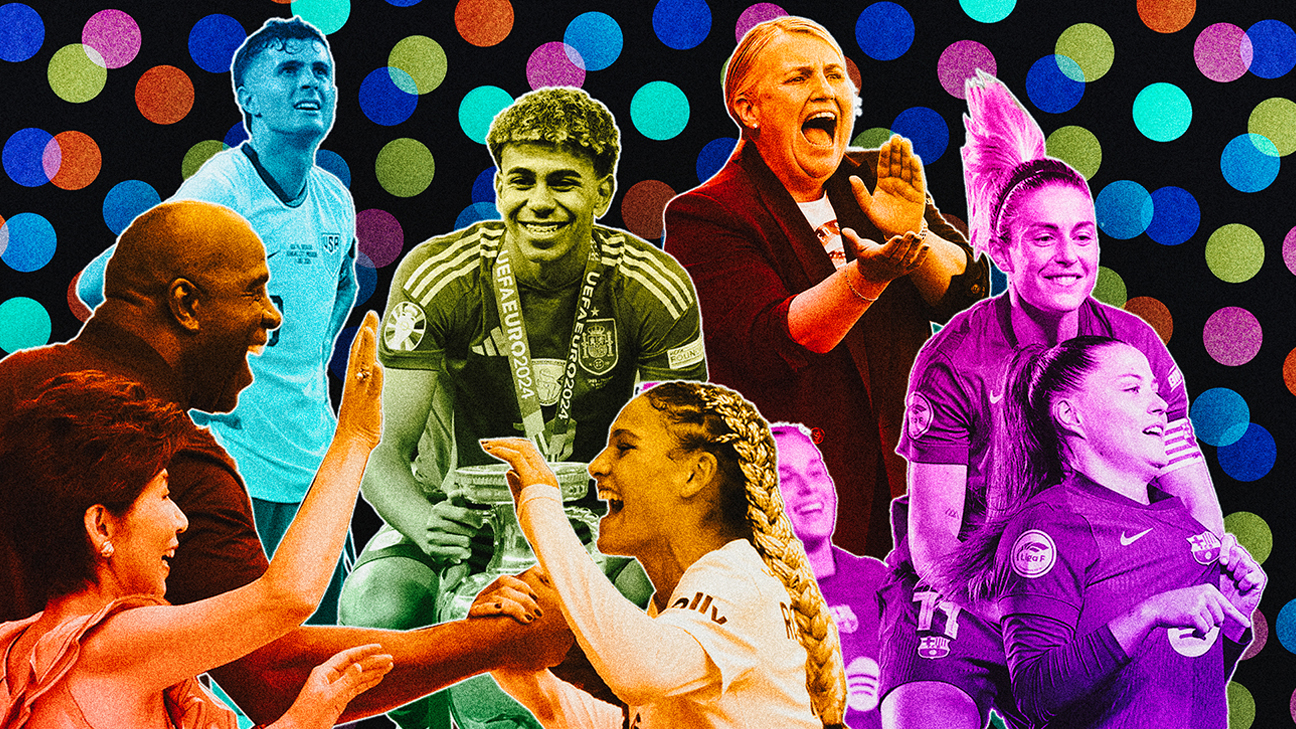If you can’t get Jurgen Klopp, you could do a lot worse than hiring the guy he beat in the 2019 Champions League final.
Exactly two months after firing Gregg Berhalter due to the U.S. men’s national team crashing out of the group stage of Copa América, the U.S. Soccer Federation announced on Tuesday the hiring of Mauricio Pochettino as the USMNT’s new manager. The deal has him at the helm through the 2026 World Cup, which will be hosted on American soil.
Yes, U.S. Soccer hired that Pochettino: the former manager of Chelsea, Paris Saint-Germain, and Tottenham Hotspur. There is no need for nuance: Pochettino is — by far — the most accomplished manager ever to coach the USMNT. In fact, there’s a pretty good argument to be made that he’s the most accomplished manager coaching a national team, anywhere, right now.
Pochettino has been successful, to varying degrees, at nearly every club he has coached, and along with Klopp, he ushered in a new high-pressing tactical era to the Premier League that helped reestablish the league as the most competitive in the world. Some coaches can implement a clear style of play; others can make their teams better. Pochettino has a long track record of doing both, and doing it at the highest levels of the sport.
In terms of realistic coaching options for the U.S. men’s national team, Pochettino is as good as it gets. But given how tricky it is to identify and project managerial skill from situation to situation, there’s no guarantee that it’ll work out. So let’s dig into to the questions: How did U.S. Soccer land on Poch, and what makes him such a good hire? And why might it still fail?
How U.S. Soccer landed on Pochettino
After Berhalter was fired, I wrote about the federation’s self-promoted process, led by sporting director Matt Crocker, behind rehiring Berhalter last summer. The federation released a document explaining how it landed on Berhalter, and it was mainly just a bunch of corporate gobbledygook that made the USMNT manager out to be more of a tech CEO than a soccer coach. There was plenty of talk about vision, relationships, empowerment and strategy, but very little about winning and tactics.
The main task of a manager is to make players perform at least to, if not above, their talent level. That’s it — everything else is secondary. U.S. Soccer, however — at least based on the document it released — put all the secondary stuff ahead of the primary thing.
Jeff Carlisle looks at the ways Mauricio Pochettino will be able to make his mark on the USMNT if he takes the manager role.
However, sources have since told me that the process behind hiring U.S. women’s national team manager Emma Hayes was very similar to the one I’d recommended for the men’s team. Also led by Crocker, it used data to identify which coaches made their teams better and what styles they played. That information was then used to identify the best candidates for the job, and all signs — including the USWNT’s gold medal at the Olympics — point to that process being an overwhelming success.
Now, the dynamic isn’t quite the same here. From both pay and prestige, the USWNT managerial job is arguably the best job in women’s soccer. It’s why the U.S. was able to land Hayes, who might be the best manager in the women’s game. Yet the country-to-club relationship is inverted in men’s soccer: Most of the money and prestige are in the European club game, with the vast majority of the world’s best coaches working in the day-to-day grinds across England, France, Italy, Germany and Spain.
Right now, the men’s club game is stuck in a bit of a transitional phase. Some of the world’s biggest clubs aren’t flush with cash anymore, and an increasing number of European teams are being purchased by impatient American investors who want to run their teams like hedge funds. Chelsea, Pochettino’s most recent employer, represent perhaps the worst example of the latter trend. And they parted ways with Pochettino after just one (successful) season.
And so, many big clubs are opting for more inexperienced and untested (also read: lower-paid) managers than they’ve gone for in the past. This created a situation where someone like Pochettino was both available for and interested in the USMNT gig. Credit to Crocker & Co. for jumping on the opportunity.
Why Pochettino is a slam dunk for the USMNT
Almost every team has improved after hiring Pochettino to be the head coach.
Less than three years after he retired as an Espanyol player, Pochettino was hired to be the manager of the Barcelona-based club despite having no head-coaching experience and very little coaching experience of any kind. He took over in January 2009 with the team in the relegation fight — and they finished the season in the middle of the LaLiga table.
Over his 3½ years with the club, Espanyol’s point-per-game total improved from 1.1 to 1.2 and their goal difference improved from minus-0.4 to minus-0.2. That might not seem like a lot, but over the course of a season that’s a four-point improvement and nearly an eight-goal improvement. While we can’t attribute all of that to Pochettino as manager, it’s worth noting that players who add four points or eight goals in a season are the highest-paid players in the world.
After Espanyol, Pochettino joined Southampton in January of 2013. The improvement there was even starker:
While Pochettino took over an underperforming team — compare Southampton’s goal differential to their xG differential, or expected goals differential, pre-Poch. He didn’t just benefit from some positive regression to the mean — the team genuinely improved during his season-and-a-half with the club.
Why only a season-and-a-half? The work he did with Southampton got him hired by Tottenham, who experienced a similar level of improvement under his watch:
The point totals are hurt somewhat by a lackluster final half-season with the club. But overall, Spurs went from a team that sometimes flirted with the Champions League to a team that made the Champions League final under Pochettino.
Some people like to use the bad faith argument that Pochettino’s teams haven’t won enough, but Spurs have never been the richest team in the Premier League. And yet, over a two-season stretch, this happened:

They, of course, somehow didn’t win the league. But, at least when appraising a managerial hire, would you rather have the guy whose team led the league in points for one season or two seasons?
Since leaving Spurs, Pochettino’s career feels like it’s cooled down, but I think that has more to do with his career choices than his managerial ability. First, he took on the impossible job at PSG, where Neymar, Kylian Mbappé and Lionel Messi underachieved no matter who their manager was. League performance in Ligue 1 doesn’t even matter, and you’re judging everything from the highly random sliver of matches that constitute the UEFA Champions League.
But then came Chelsea, which lasted only a season, but not because the team didn’t get better. In fact, Chelsea improved by 19 points from the 2022-23 season to the 2023-24 season. Some of that comes from the fact that they signed 12 players while Pochettino was the manager, but they also moved on from the likes of Kai Havertz, Mateo Kovacic, Ruben Loftus-Cheek and Pochettino’s new star pupil, Christian Pulisic. That Pochettino was able to put together a cohesive and competitive team amid the chaotic personnel churn imposed by ownership also speaks well to his managerial abilities.
On top of all that, thanks to his experience at Southampton, Tottenham and Chelsea, Pochettino also has a history of playing younger players. Last season, Chelsea were the youngest team in the Premier League, as measured by their average age weighted by the number of minutes played: 25.2. At the Copa America, the USMNT was only slightly older: 25.4.
Plus, the main source of strife during Pochettino’s coaching career has been between the front office and himself. At Tottenham, Pochettino wanted increasing control over personnel decisions. The problem is that most coaches are terrible personnel people because they spend all their time coaching the players they already have. This won’t be a problem with the USMNT — Pochettino will be limited to the players eligible to play for the USMNT.
At Chelsea, he frequently butted heads with Todd Boehly over Boehly’s, um, unique approach to owning a soccer club. Fortunately, Todd Boehly, or someone like him, is unable to purchase the U.S. men’s national team.
Why it still might not work out for the USMNT
There are two ways this doesn’t work out.
The first one is that Pochettino overplays his hand and tries to “tactify” the USMNT too much. In other words, he tries to cultivate a cohesive style that can’t actually be cultivated, because he isn’t able to pick his players and he only gets to train with the team a couple of times per year.
Since 2010, there have been 77 managers who have coached at least 200 matches across Europe’s Big Five top leagues, and there are a couple of ways we can measure their attempts at style/strategy. “Passes allowed per defensive action” — or PPDA — looks at how many passes a team allows before intervening in the attacking half of the field. That’s, roughly, a representation of how aggressively a team presses. And then the “opposition pass-completion percentage” represents how effective that press is.
Pochettino’s teams produced a PPDA of 9.63, which is the fifth-most aggressive mark among all coaches — ever so slightly ahead of Klopp’s Liverpool. And Pochettino’s teams allowed their opponents to complete 75.9% of their passes, the seventh-lowest mark among all of these coaches. There are some complications with player talent, league styles and so on, but Pochettino’s tactical approach is clear: He wants his team to win the ball high up the field and make it hard for their opponents to complete passes.
This graphic, which plots every team to play in Europe’s Big Five leagues from the 2014-15 through 2018-19 seasons, sums it up quite well:

The problem is that pressing well is really hard. Although it might look like it’s a bunch of guys just running around and trying really hard, that’s an illusion. They’re running around and trying hard, yes, but those movements have to be ultra-coordinated, otherwise a simple pass or dribble will break the press apart and lead to a fast break the other way. And so, the downside case for the Pochettino era is that a half-functioning press actually makes the U.S. worse.
Of course, for that to happen, Pochettino himself would need to not be aware of the limitations of practice time and personnel on implementing strategy in the international game. Seems unlikely! Plus, his time at PSG — when he had the least defensively active front three in the history of the sport with Messi, Mbappe and Neymar — was a pretty clear lesson in needing to adapt to your circumstances.
Also, this past season at Chelsea wasn’t some kind of high-pressing exhibition, either. They pressured and won the ball at an above-average rate, but it was much more subdued than we’ve seen in the past:

That’s in keeping with the larger trends of the sport, where many top teams are becoming more comfortable with their opponents passing the ball around their own third and not pushing as many bodies forward to try to win the ball back so quickly.
Pochettino also dabbled with the lopsided-back-four trend at Chelsea: In possession, one fullback pushed forward into the attack and the other slid next to the two center backs. The point is, he’s not quite some ideologue pushing forward his own ideas, no matter the context. I suspect he’ll adapt his ideas to the circumstances with the USMNT, too.
The second way this could go wrong: There’s a limit to just how good these U.S. players can be.
Having a great international manager is no guarantee for great results. Luis Enrique has been incredibly successful both at Barcelona and PSG, but his Spain team was eliminated from the 2022 World Cup by Morocco in the round of 16. Luciano Spalletti led a brilliant 2022-23 Napoli team to its first Serie A title since Diego Maradona was playing for the club, but his Italy team was awful at the Euros this past summer.
Conversely, here’s a list of the coaches who have won a World Cup, Euro or Copa America since 2014: Jogi Low, Fernando Santos, Jorge Sampaoli, Didier Deschamps, Tite, Roberto Mancini, Lionel Scaloni and Luis De La Fuente. These are coaches who either washed out of the highest club levels of Europe, are federation/national team lifers, or guys who never coached outside their own domestic leagues.
The point isn’t that you should hire an unspectacular manager if you want to win international trophies. No, it’s that coaches can make only so much of a difference when you can’t recruit players and you barely get to practice.
After unconfirmed news of the Pochettino hire first broke, the USMNT was tied with Belgium as the 11th-biggest favorites to win the 2026 World Cup, per ESPN BET. The Americans really might have the best coach at the tournament, but the most likely outcome for them remains right around where it usually is: a knockout stage exit, probably before the quarterfinals.



